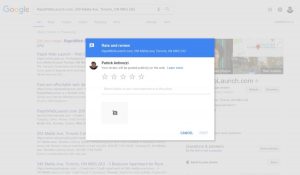Ad blocking is all the rage at the moment. Multiple companies offer ad blocking software to block ads, and Apple’s recent introduction of their new IOS with ad blocking capabilities has only fanned the flames.
How Big Is the Ad Blocking Problem?
How critical is the issue? Ad blocking is definitely on the rise with some in the industry estimating that more than 30% of consumers are using it and as much as $ 20 billion of ad revenue will be lost this year.
Industry voices are alternatively alarmed and sanguine. Either we are on a path toward advertising Armageddon or it’s all a big hoo-ha about nothing.
On the surface, ad blocking is highly attractive for consumers. Down load some software and voila: no more annoying ads. But there would be a downside to this were it to truly take over as the standard.
What Would Happen in an Advertising Free World?
Let’s look at two hypothetical examples:
Traditional TV—TV networks generate about half of their revenue from advertising and the other half from distribution—e.g., the fees cable and satellite providers pay them to distribute their content. If advertising disappeared tomorrow, we can assume that cable fees would probably increase, maybe even double to make up for the lost advertising revenue (Traditional TV doesn’t have an ad-blocking problem, but this just illustrates the issue.).
Facebook—Facebook is “free” to use because it has an advertising driven model. If Facebook advertising disappeared tomorrow, they would have to charge users $ 12 to $ 15 each to maintain the same level of revenue (e.g., current Facebook ad revenue divided by user base).
So, it seems pretty clear that if ad blocking were to ever eliminate advertising altogether, it would be a pretty big deal for consumers as they would begin to pay for all sorts of content that they don’t pay for today.
What about Marketers? Advertising remains the central and, arguably, the most powerful tool for advertisers to reach their target audience and tell their story at scale. Marketing without advertising would dramatically change the marketing landscape.
Without digital advertising, Marketers would look to alternative communication channels like traditional TV, print, and radio. Further, in-program product placements, sponsorships, and events would likely increase in importance.
This is unlikely to happen anytime soon, but it illustrates the potential threat to the advertising model as we know it today—for both consumers and Marketers.
The Consumer Compact
Stepping back for a second, let’s restate the obvious: consumers have an unacknowledged but implicit “compact” with publishers. The compact is simple: publishers will provide content free of charge but with advertising, enabling consumers to consume content for free. This model has worked extraordinarily well for decades and most consumers take free content for granted because of it.
But that’s just the problem. Consumers don’t really think about the “compact.” They just think about annoying ads that they’d rather not see or hear. So, more and more, they download or turn on ad-blocking software. And more and more, ads are blocked—and unseen
The Marketers Dilemma—What To Do about Ad Blocking?
What should Marketers do about ad blocking? The answer is actually pretty simple—measure it and make more entertaining ads.
Measure It—Current MRC approved digital audience measurement tools help Marketers understand how many and what type of people are exposed to their digital advertising. Importantly, the technology works in a way that the only ads measured are the ones that are actually served to the viewer—or not blocked. This means that ad blocking can be measured by comparing the number of ad impressions bought to the number of impressions delivered. The difference is mostly ad blocking.
Make Better Ads—A key reason for ad blocking is annoying ads. It’s simple: don’t make them. Beyond this, DVR experience shows that high quality ads in DVR’d programs are ads people still watch. Consumers actually like advertising that is well-crafted, tells a relevant and compelling story, and uses appropriate humor. So Marketers should make better ads—and avoid causing people to want to download ad blocking software in the first place.
Where will all of this end? It’s hard to say, but what recent history tells us is that there are all kinds of pitfalls in the digital world. First, it was lack of ad viewability. Then it was issues with audience delivery. Next was bots and fraud. And now it’s ad blocking.
In addressing these issues, the common denominator in every case: measurement. Measurement is what drains the swamp so we can see what’s left and how to deal with the ad blocking alligators and other assorted bad guys. So, my advice on ad blocking is simple: measure it. Then, make better ads.
Digital & Social Articles on Business 2 Community(83)



